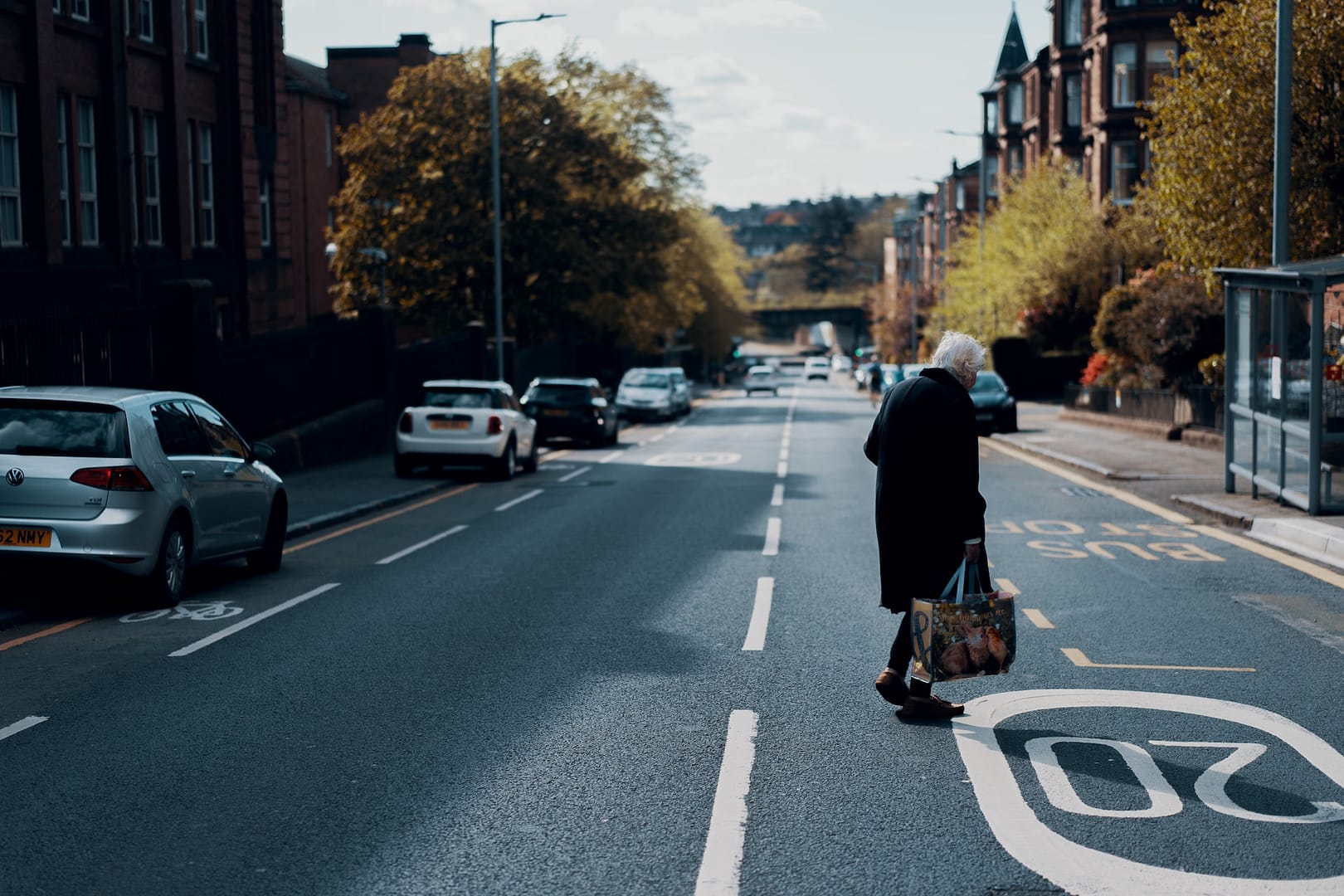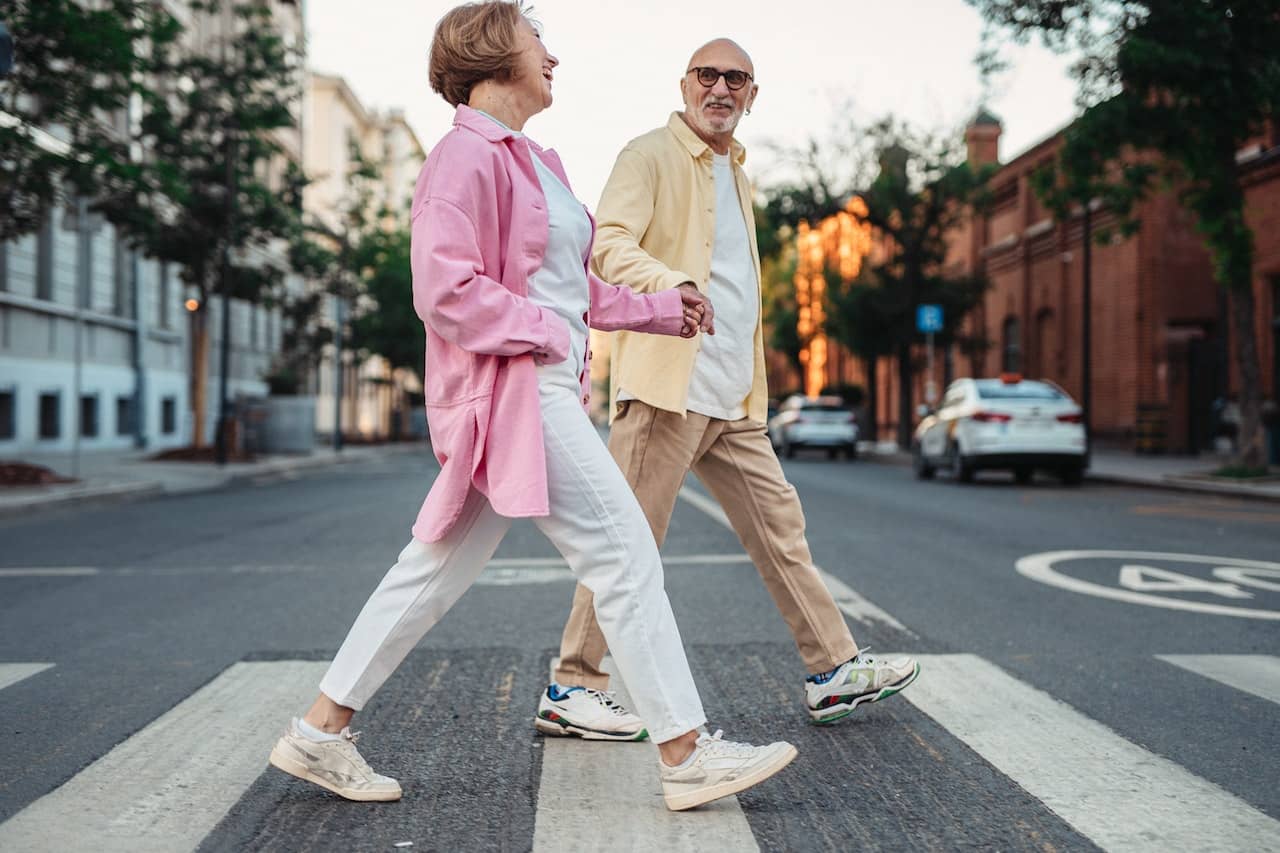Elderly pedestrians, often silently navigating the bustling streets, have unique safety needs that demand our attention. As our population ages, ensuring the well-being of our seniors on the sidewalks becomes increasingly important. In this article, we will delve into the common safety problems faced by older adults and explore the best strategies to guarantee their safety while crossing streets and strolling through neighbourhoods. We will also walk you through your options for making a road traffic accident claim with us at National Claims.
The Unique Safety Needs of Elderly Pedestrians
Elderly pedestrians face a myriad of challenges while navigating the urban landscape. These challenges are often rooted in physical limitations and cognitive changes that come with age. Let’s break down some of the most common safety problems among older adults:
Reduced Mobility and Balance
As we age, our bodies undergo inevitable changes. Reduced muscle mass and bone density can lead to decreased mobility and balance. Elderly individuals might not have the agility they once had, making it difficult to step up on curbs or cross streets quickly. This diminished mobility can lead to dangerous situations on the road.
Declining Vision
Vision is a crucial element of pedestrian safety. Unfortunately, many elderly individuals face declining vision as a natural part of ageing. Conditions like cataracts and macular degeneration can impair their ability to see oncoming traffic, road signs, and obstacles on the sidewalk, increasing the risk of accidents.
Slower Reaction Time
Aging often leads to a gradual decrease in cognitive function, including slower reaction times. Elderly pedestrians may not react as swiftly as younger individuals when faced with sudden dangers or obstacles on the road. This can make it challenging for them to respond effectively in potentially hazardous situations.
Hearing Impairments
Hearing impairments are prevalent among the elderly, making it challenging to hear approaching vehicles, sirens, or even fellow pedestrians alerting them to potential dangers. This lack of auditory awareness can significantly impact their safety while walking in busy urban areas.
Vulnerability to Health Issues
Elderly individuals are more likely to experience various health issues that can compromise their safety while walking. Conditions such as heart disease, diabetes, and arthritis can impact their physical ability to walk comfortably, and they may need more time and assistance to cross streets safely.
Ensuring the Safety of Elderly Pedestrians
Now that we’ve outlined the common safety issues faced by elderly pedestrians, let’s explore the best ways to address their unique needs and ensure their safety while navigating the urban landscape.
Improved Infrastructure
One of the key strategies for addressing the safety needs of elderly pedestrians is to enhance the infrastructure of our cities. This includes making sidewalks more accessible by adding ramps, handrails, and benches for resting. Crosswalks should be well-marked and equipped with audible signals, which can help those with hearing impairments cross the street safely.
Adequate Lighting
Well-lit streets are essential for the safety of all pedestrians, but they are particularly important for the elderly. Proper lighting can help older individuals with declining vision identify potential hazards and navigate sidewalks and crosswalks with confidence, especially during nighttime hours.
Senior-Friendly Traffic Signals
The installation of senior-friendly traffic signals can significantly improve the safety of elderly pedestrians. These signals offer extended crossing times, allowing older individuals the extra time they may need to cross streets safely. Moreover, signals with clear visual and auditory cues can assist those with vision and hearing impairments.
Public Awareness and Education
Raising public awareness about the unique safety needs of elderly pedestrians is a crucial step towards ensuring their well-being. Educational programs can inform both older adults and the general population about the challenges faced by seniors on the road and how to navigate them safely.
Community Engagement
Building a sense of community and cooperation can go a long way in addressing the safety needs of elderly pedestrians. Local neighbourhood associations, community centres, and senior organisations can collaborate to create pedestrian-friendly environments that support the elderly population.
Regular Health Assessments
It’s important for elderly individuals to undergo regular health assessments to monitor their physical and cognitive well-being. Physicians can provide guidance on walking aids, such as canes or walkers, and offer advice on how to stay active and maintain balance.
Safe Routes and Neighborhood Design
Designing neighbourhoods and residential areas with the needs of elderly pedestrians in mind is essential. Safe routes that avoid hazardous intersections, with more crosswalks and shorter crossing distances, can significantly reduce the risks for seniors.
Multi-Generational Involvement
Fostering an environment where different age groups interact and support one another is crucial. Younger generations can help older adults by offering assistance at busy intersections or helping them carry groceries, fostering a sense of community and shared responsibility.
A UK Perspective
In the United Kingdom, addressing the unique safety needs of elderly pedestrians is a pressing concern, given the country’s ageing population. According to a report by the UK government’s Department for Transport, pedestrians aged 70 and over accounted for 26% of pedestrian fatalities in 2019. This statistic underscores the need for specific measures to protect older individuals on the streets.
The UK has taken various steps to enhance the safety of elderly pedestrians. Initiatives such as “Safer Routes to School” have been extended to support seniors, encouraging safe walking routes and providing traffic safety education. Additionally, the UK has introduced “Toucan” crossings, which are designed to accommodate both pedestrians and cyclists, making road crossings safer for people of all ages.
In 2020, the UK government allocated £2 billion for cycling and walking initiatives, which includes projects aimed at improving pedestrian safety. This investment reflects the government’s commitment to creating safer streets for all, especially older individuals who may face unique challenges when walking.
Making a Road Traffic Accident Claim with National Claims
At National Claims, we understand the importance of safeguarding the well-being of elderly pedestrians. Our mission is to ensure that victims of road traffic accidents, including elderly individuals, receive the support and compensation they deserve. If you or a loved one has been involved in a road traffic accident, here’s how you can make a claim with National Claims:
Contact Us: Reach out to National Claims through our website or hotline to initiate the claims process. Our experienced team will guide you through the necessary steps.
Consultation: We will schedule a consultation to gather all the details of the accident, including any injuries sustained. This consultation is a vital first step in assessing the strength of your claim.
Legal Expertise: National Claims has a team of legal experts who specialise in personal injury claims, including those involving elderly pedestrians. Our experts will review your case and provide legal advice on the best course of action.
Investigation: We will investigate the accident thoroughly, collecting evidence such as witness statements, accident reports, and medical records to support your claim.
Negotiation: Our skilled negotiators will work on your behalf to secure a fair settlement from the responsible parties, whether it’s an individual, a company, or an insurance company.
Compensation: If your claim is successful, you will receive the compensation you deserve, which may cover medical expenses, rehabilitation, loss of earnings, and pain and suffering.
Support: National Claims is committed to providing ongoing support and guidance throughout the claims process, ensuring that you have the resources and assistance needed for your recovery.

Conclusion
The safety of elderly pedestrians is a matter of collective responsibility. As our population ages, it’s crucial that we address the unique safety needs of older adults to ensure their well-being while navigating our streets and sidewalks. From improving infrastructure and traffic signals to raising public awareness and fostering a sense of community, there are many ways we can make a difference.
As we move forward, let’s keep in mind that the safety of elderly pedestrians is not just a matter of traffic regulations; it’s a reflection of our society’s commitment to inclusivity, compassion, and respect for our seniors. By taking these steps, we can create a more pedestrian-friendly world where everyone, regardless of age, can walk the streets with confidence and security. And with National Claims by your side, should you ever find yourself in a road traffic accident, you can rest assured that we’re here to support you in your journey towards recovery and compensation.
Contact us today and get a start on your claim for a road traffic accident.
Click below to see why we are one of the most trusted claims management companies in the UK.

We’re proud of our excellent customer reviews
We thrive on delivering exceptional service and ensuring our clients’ satisfaction. Don’t just take our word for it. Check out some of our independent reviews to see what our clients have to say.
Excellent

This firm is excellent, they sorted out my car pay out and injury claim very fast, they always communicate with you all the time.

My accident case was dealt with confidence and with great result of the outcome, especially James kept me informed all the time.

I was very impressed at the way my inquiry was treated. I was listened to attentively and everything I needed to know was explained to me.






